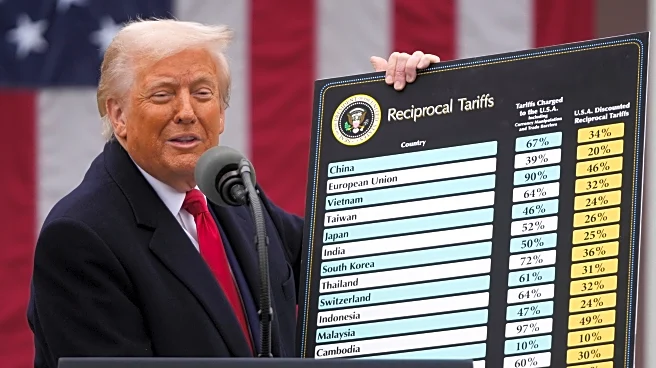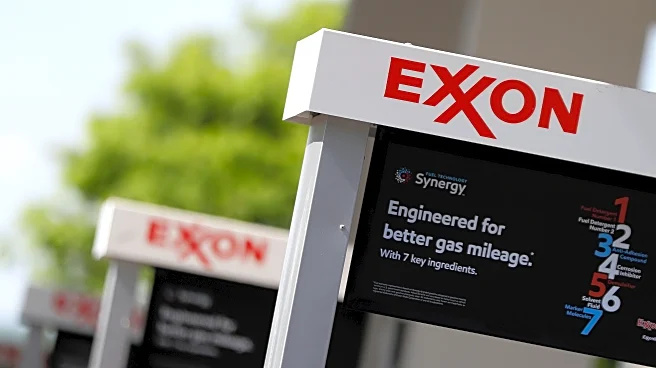What's Happening?
The average price of regular grade gasoline in the United States has decreased by 10.5 cents per gallon over the past two weeks, reaching $3.116 per gallon, according to the latest Lundberg Survey. This
price is 8 cents lower than it was a year ago. The reduction in retail prices was partly offset by a loss in gasoline margins for retailers, which averaged nearly a nickel. The gap between retail prices and the weighted wholesale price plus taxes decreased by 4.5 cents to 39.5 cents per gallon. Despite the price drop, refiners experienced a loss in margins due to a rebound in crude oil buying prices. The recent Gaza peace agreement initially contributed to lower oil prices, but ongoing geopolitical tensions, including the Russia-Ukraine conflict and rising tensions between China and the U.S., have influenced market dynamics.
Why It's Important?
The decrease in gasoline prices provides some relief to consumers amid broader economic challenges. Lower fuel costs can lead to increased disposable income for households, potentially boosting consumer spending in other areas. However, the fluctuating nature of oil prices, influenced by geopolitical events, underscores the volatility of the energy market. Retailers and refiners face challenges in maintaining profitability as they navigate these price changes. The ongoing geopolitical tensions could continue to impact oil prices, affecting both the energy sector and the broader economy.
What's Next?
Further retail price cuts may occur, but they are expected to be smaller and short-lived due to weak gasoline demand. As retailers adjust to the recent price hikes in rack and dealer buying prices, there may be pressure to increase street prices. The market will continue to be influenced by geopolitical developments and changes in consumer demand, which could lead to further fluctuations in gasoline prices.













